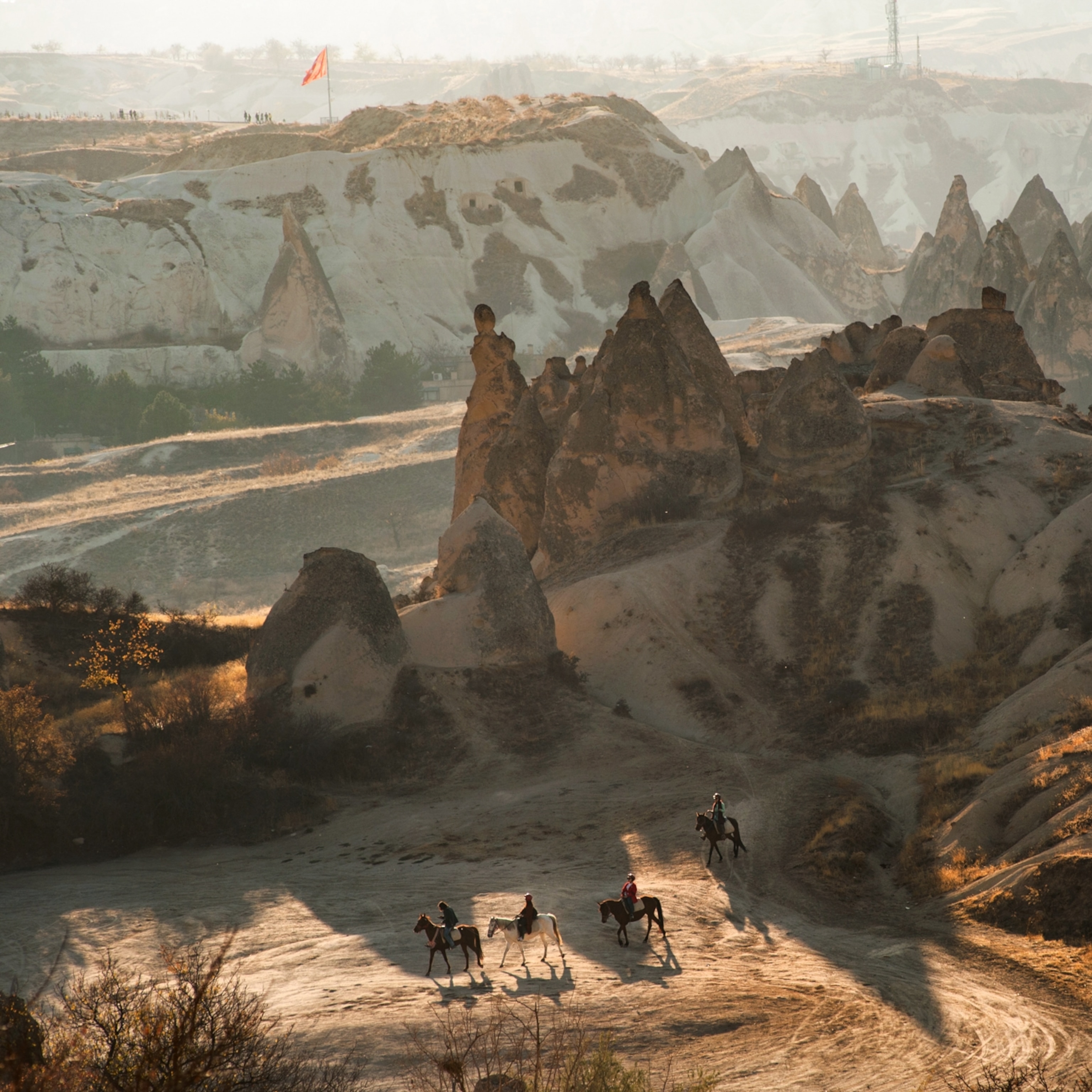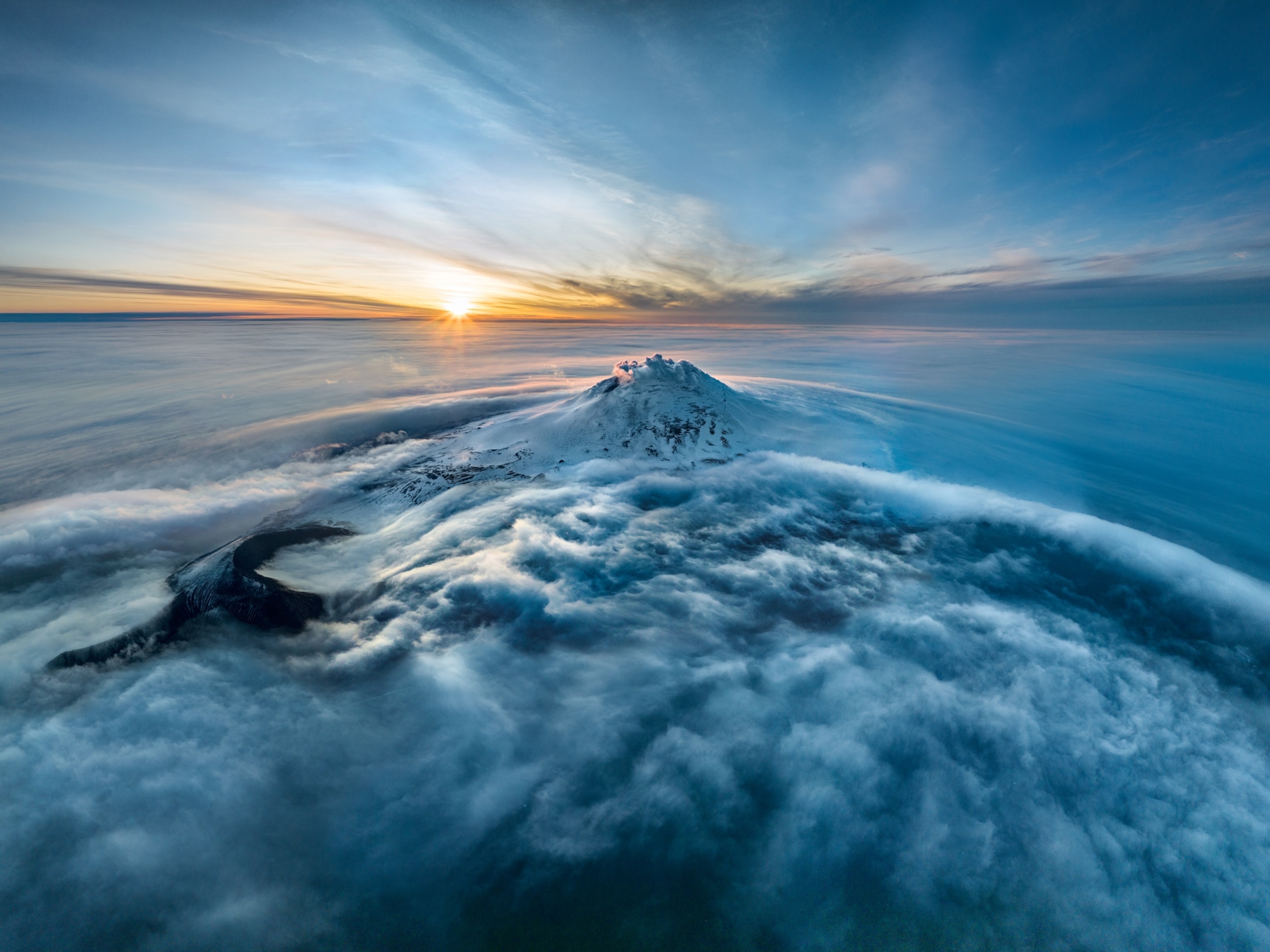Lush rolling hills cradle the still waters of Romania’s Saint Anne Lake, which rests in an ancient crater from the eruption of the Ciomadul volcano. The peak last blew its top some 30,000 years ago, and its lengthy quiescence has led many to presume the volcano would not likely erupt again.
But as it turns out, the rocks miles below this serene scene may be stewing with a surprising amount of heat. A study recently published in Earth and Planetary Science Letters suggests that the system likely harbors between five and 14 cubic miles of magma, a maximum volume more than that of 20,000 Great Pyramids of Giza.
To be clear, this does not mean an eruption is necessarily in the volcano’s future. But the work calls attention to the potential hazards of often overlooked volcanoes that have quietly simmered for tens of thousands of years.
“We look preferentially at active volcanoes—obviously because they show evidence of real risk,” says study author Mickael Laumonier of Université Clermont Auvergne, France. “But we shouldn’t forget other relatively recent young volcanoes, because they could present a risk that we should assess.”
By pairing geophysical and geochemical analysis with numerical simulations, the study gives researchers a stunning peek into what may be brewing beneath Ciomandul—and it promises to help scientists better understand how similar volcanic systems evolve over time. (Explore the volcanic titans of the Ring of Fire.)
“All of this is great work,” says Janine Krippner, a volcanologist at the Smithsonian Global Volcanism Program who was not involved in the study. But she cautions that teasing apart the precise conditions miles beneath the surface is an incredibly difficult task.
“It’s still not us saying that’s what the case is,” she says. “It’s saying, We have a lot of data that show this is what it might be.”
Eternal volcanic flames
At any given time, at least 20 volcanoes are erupting around the world. But there are many more that can potentially be active—the problem is figuring out which ones. (Read about how volcanoes form and the deadliest eruption in history.)
Volcanoes like Ciomadul that haven’t erupted in the last 10,000 years or so are often called inactive. However, this dividing line is somewhat arbitrary, Krippner says.
When it comes to volcanoes, “‘extinct’ is a very iffy word,” she says. Some volcanoes, like the infamous Yellowstone supervolcano, may lie dormant for hundreds of thousands of years between eruptions. (Find out why Yellowstone ranks just 21st in a list of the most dangerous U.S. volcanoes.)
One sign that a seemingly quiet volcano has the potential for future eruptions is if volumes of molten rock linger below it, and past studies at Ciomadul had hinted that might be the case. By studying the way seismic waves ricochet through the ground, past researchers spotted some indications of a magma reservoir. Surveys of the subsurface electrical conductivity—a property that is influenced by conditions like the temperature and water content of the rocks—also hinted that the zone between three and 17 miles down may be more mush than solid.
Yet it was still unclear if the rock was truly molten, and if so, how much magma there might be.
Consulting crystal record-keepers
To answer these questions, Laumonier and his colleagues first turned to rocks from the volcano’s past eruptions. As magma sits beneath a volcano, it slowly cools and forms crystals, some of which act as tiny mineralogical record-keepers, charting the conditions in which they formed.
For example, a class of minerals known as amphiboles change chemistry depending on the temperature and pressure during crystallization. Searching for these crystals in the erupted rock helps researchers learn about the conditions of this ancient magmatic system.
The team combined this geochemical data with what they knew of the system’s dimensions and ran numerical simulations to determine how quickly it might have cooled through time, and to see what the volcanic plumbing could look like today. The result: The rocks in the upper crust beneath the volcano are, on average, 15 percent molten, with some regions as high as 45 percent.
The team verified this result by crafting a model based on measurements of electrical conductivity for previously erupted rocks at varying temperatures, pressures, and water content. This helped them interpret what was seen before in the electrical conductivity measurements under Ciomadul.
The traditional trope of a magma chamber is this big, gigantic, menacing-looking, red-hot blob of magma sitting in the crust that’s about to erupt and kill us all... [but] these systems are definitely not like that for most of their lives.Michael Ackerson, Smithsonian National Museum of Natural History
This second approach gave a similar result, suggesting that the zone beneath the volcano is indeed between 20 and 58 percent molten. While this is a large range for the amount of magma that could be lingering in Ciomadul’s subsurface pipes, all the possible subsurface conditions yield a significant amount of melt for Ciomadul.
“We have no other options to explain the geophysical anomaly,” Laumonier says.
Researchers believe that an eruption is possible if a volcano harbors more than roughly 45 percent molten rock. Below that, the “system is all locked up by crystals, and it can’t erupt,” says Michael Ackerson, curator of rocks and ores at the Smithsonian National Museum of Natural History in Washington, D.C.
Thus, this latest analysis suggests that an eruption may be possible at Ciomadul—but that does not mean it’s inevitable.
Mushy plumbing
Importantly, this study also probes the question of what such systems deep inside Earth actually look like.
“The traditional trope of a magma chamber is this big, gigantic menacing-looking, red-hot blob of magma sitting in the crust that’s about to erupt and kill us all,” Ackerson says.
But research increasingly suggests that’s likely not the case. Instead, magma reservoirs spend most of their lives quietly stewing in the crust. They’re often at least in part crystallized, forming a mushy, stony soup with varying proportions of crystals to melt throughout the system. This ratio might drastically differ in the magmatic plumbing of one volcano to the next.
For Ciomadul, the researchers believe the molten rock collects in two zones of mush: an upper region between three and 11 miles deep and a lower, hotter reservoir starting around 18.5 miles down. Each of these zones is likely composed of overlapping pockets of molten material of slightly different temperature and composition. For now, it’s unclear how the two zones precisely connect, but the new magmatic mapping still provides valuable information about this volcano’s inner workings.
“This is a new data point in the story of global magmas,” Ackerson says. “This is one specific volcano in one specific point in time, and that’s going to help us get a much broader, nuanced picture of how magmas form and evolve.”
Related Topics
You May Also Like
Go Further
Animals
- Octopuses have a lot of secrets. Can you guess 8 of them?
- Animals
- Feature
Octopuses have a lot of secrets. Can you guess 8 of them? - This biologist and her rescue dog help protect bears in the AndesThis biologist and her rescue dog help protect bears in the Andes
- An octopus invited this writer into her tank—and her secret worldAn octopus invited this writer into her tank—and her secret world
- Peace-loving bonobos are more aggressive than we thoughtPeace-loving bonobos are more aggressive than we thought
- Why are these emperor penguin chicks jumping from a 50-foot cliff?Why are these emperor penguin chicks jumping from a 50-foot cliff?
Environment
- U.S. plans to clean its drinking water. What does that mean?U.S. plans to clean its drinking water. What does that mean?
- Food systems: supporting the triangle of food security, Video Story
- Paid Content
Food systems: supporting the triangle of food security - Will we ever solve the mystery of the Mima mounds?Will we ever solve the mystery of the Mima mounds?
- Are synthetic diamonds really better for the planet?Are synthetic diamonds really better for the planet?
- This year's cherry blossom peak bloom was a warning signThis year's cherry blossom peak bloom was a warning sign
- The U.S. just announced an asbestos ban. What took so long?The U.S. just announced an asbestos ban. What took so long?
History & Culture
- Why Passover is one of Judaism’s most important holidaysWhy Passover is one of Judaism’s most important holidays
- Is this mass grave a result of contagion—or cannibalism?Is this mass grave a result of contagion—or cannibalism?
- The surprising story of how chili crisp took over the worldThe surprising story of how chili crisp took over the world
- We swapped baths for showers—but which one is better for you?We swapped baths for showers—but which one is better for you?
- How a 3,000-year-old tomb upended what we know about ancient PeruHow a 3,000-year-old tomb upended what we know about ancient Peru
Science
- Ground-level ozone is getting worse - here's what that meansGround-level ozone is getting worse - here's what that means
- Would your dog eat you if you died? Get the facts.
- Science
- Gory Details
Would your dog eat you if you died? Get the facts. - In a first, microplastic particles have been linked to heart diseaseIn a first, microplastic particles have been linked to heart disease
- New fossils reveal one of the smallest titanosaurs ever foundNew fossils reveal one of the smallest titanosaurs ever found
Travel
- How citizen science projects are safeguarding Costa Rican pumasHow citizen science projects are safeguarding Costa Rican pumas
- These guides spend their lives looking for dolphins. They’re dogs.These guides spend their lives looking for dolphins. They’re dogs.
- What it's like to hike to the end of the world in ChileWhat it's like to hike to the end of the world in Chile
- These restaurants serve the best steak in Buenos Aires, ArgentinaThese restaurants serve the best steak in Buenos Aires, Argentina








